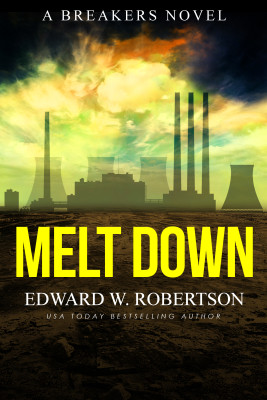Last year, I wrote a series of posts about what I would do if I were just getting my start as an indie author. It was intended to be a modest and simple way to get your foot in the door even if, like me, you’ve been on Facebook 18 months but still find yourself terrified that one wrong click will announce to the world that it’s been nine days since you last put on pants.
But the problem with last year is that it was last year. In the timescale of indie authors, “last year” is like another epoch. I may as well have written a guide on the best way to trap an allosaurus. Interesting, perhaps, as a historical document, but not all that relevant in this brave new world of “mammals.”
That right there is the problem. My advice, at the time, was (hopefully) relevant, because I had just graduated from indie-hobo to making a living at this (by my comically low standards). Then things changed. And they changed some more. And they changed again. When the landscape changes this fast, as soon as you take off, you no longer have a clear view of what’s happening down on the ground. By the time someone’s an expert, they’re obsolete.
That’s maybe a bit harsh. But it is absolutely critical to understand that nobody is offering bulletproof advice. And that, perversely, people with less authority–indies with little to no track record–may be in better position to offer quality advice than people who’ve sold hundreds and thousands of their books.
I don’t know where that leaves me exactly, and you know what, I’m not going to bother to figure it out. A couple weeks ago, someone asked me how to get started here and now. I’m not sure I’m qualified to answer that anymore, but it’s an interesting question. So here’s some advice and analysis! Some or all of it might be worthless! Enjoy figuring that out for yourself.
Okay. To understand what you might do differently in 2013, we should probably look at what is different. What’s changed over the last year?
First, the biggie: Select sucks. The way Amazon treats free giveaways has changed repeatedly. Right now, even people who are giving away as many as 40,000 copies of their books during a free run are often seeing just a few dozen sales afterwards.
I don’t know the exact mechanics of the latest algo change, but the results aren’t there anymore. It isn’t just about the algos, either. Back in February, Amazon changed their affiliate agreement in a way that diminished or destroyed a lot of the freebie-advertising affiliate sites. Select isn’t dead for all books and strategies, but it’s been reduced to a fraction of its former power. It’s no longer the no-duh choice for anyone, let alone new authors.
Now, some good news: Kobo threw open the doors to self-publishers, joining Amazon, B&N, and Apple as markets we can directly upload our work to. Kobo got a lot of early hype as this was happening last summer. A lot of indie gurus painted them as the next big thing, particularly in international markets.
That hasn’t exactly happened yet, so here’s my assessment of Kobo: they’re a cool company whose self-publishing wing (Writing Life) is run by great people. So far, they’ve managed to capture a few percent of the various English-speaking markets, except Canada, where they’re Godzilla. Currently, they are probably the fourth-largest market for self-published authors, who make up some 25% of their total sales. A new store is a new opportunity to be discovered.
On the distribution side, Smashwords has made a couple cool improvements, allowing you to upload epubs and to set up preorders at B&N, Kobo, and Apple. They also seem to have made modest improvements to the quality and speed of their distribution process. Bigger yet, the first real alternative to Smashwords popped into being: Draft2Digital. While they don’t publish to as many venues as Smashwords, they cover the major outlets, and generally seem to be much speedier and more responsive. It’s now significantly easier to reach the big markets like B&N, which non-US residents can’t publish to directly, and Apple, which has a steep learning curve.
In terms of advertising, BookBub exploded on the scene and is hands down the best mover of free and discount books (although that means their ads are expensive and can be hard to book). Kindle Books and Tips converted from a freebie site and now runs discount books. Their results can be a little inconsistent, but are often in the same tier as ENT and POI–pretty great, in other words. BookBlast opened up, too. Operating on the BookBub model, it isn’t yet large enough to be the cornerstone of an advertising campaign, but their rates are very fair, the results are there, and they’ve been growing steadily. There still aren’t enough ways to advertise to non-Amazon readers, but we have a few new tools at our disposal. And as long as there’s money to be made, effective advertising options should continue to grow.
Eight jillion other things happened, too, but these are the ones that feel significant to me. And they all pretty much point in the same direction: away from Select freebies and toward wide distribution bolstered by $0.99 sales.
But success with that model generally means having multiple books and building an audience in multiple markets. Which, by definition, excludes brand-new authors. So now that the easy button of Select has been disconnected, what should new authors do instead?
Well, I’ve got an idea. It’s pretty simple and obvious. But before I get to that, I want to look at an idea that’s kind of its opposite–and which is becoming an increasingly popular piece of advice. Part 2: Don’t Wait.










Leave a Reply